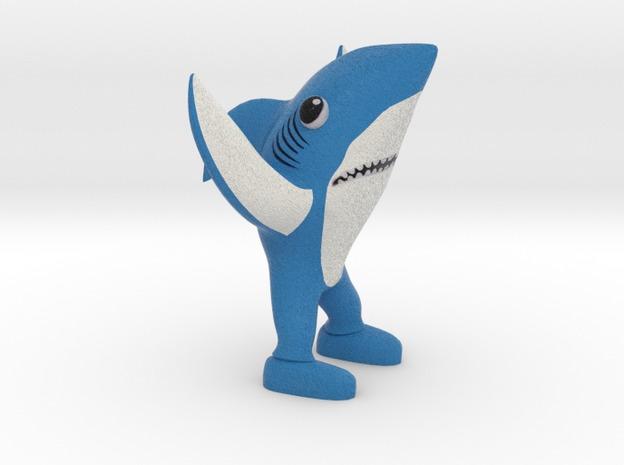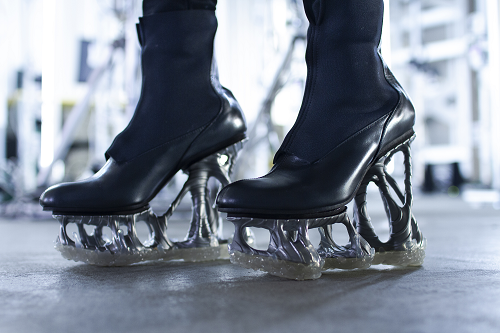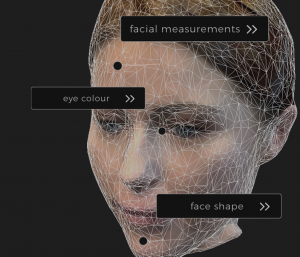Fast Things 2: The Desire Engine
With 3D printing we have the ability to very quickly make products from ideas. In a series of articles centered on the idea of Fast Things, I want to point out that the ramifications of being able to make on-trend on time may go a bit deeper than people may realize. So far when people have been trying to make on-trend items they are usually jewelry items that have been produced in a timely manner.

Teams of people worldwide jump on the latest iPhone specifications and quickly design new cases for the latest models on Shapeways and i.materialise. If a particular trend manifests itself on one of those platforms then with a number of days tens or hundreds of copies and variants can be made through the power of CAD and 3D modeling. If purple turtles playing volleyball was a thing then a 3D printed product would probably be the first physical product available subsequently. Responsiveness to fads and trends can convey significant advantages to businesses.

With 3D printed left shark a 3D printing user was sued for making a shark based on a costume worn by a dancer in a Katy Perry show.
If you’re first in the water and quickest to market than you may in some cases have won already. With today’s fragmented media landscape and hype-connectedness, the trend could be long gone by the time your competitors’ product has arrived. Especially in fashion and design goods but also in toys speed is a key factor to success. But, 3D printing in manufacturing can go much further than this. By producing on demand without stock you can deploy your capital more efficiently as well as use your internal resources better. You can also make money quicker and stop before you buy a million fidget spinners that no one wants. By using 3D printing in manufacturing you are derisking yourself and removing yourself from delay and supply chain hiccups (to a certain extent).

Generative products are now in the fun with fractals mode but could become more real world data driven.
To me, these elements already would give one distinct business advantages. There is one other idea that could be very significant since it is so little understood, and this is the idea of the desire engine. Google knows what we’re all searching for: what songs we want to listen to, what bands we want to find out more about, what products we want to buy. What if you could find out what products everyone in the world wants? But, not only find out what they like to look at or buy online, but what they want for real. What if you could analyze what shapes, colors, forms, names and designs people find attractive? What if you could then use that data to hone in on the particular forms for the particular things versus the particular types of people would like. And what if you could then use that data to automatically design the right shapes for the right people and make them available on the day. This is the idea of The Desire Engine.

Accurate facial analysis to fit the custom made glasses is already happening.
You could do the experimental set up in various different ways. One method would be: as a storefront of a glasses store you would have 50 screens. On each screen, you would display renderings of 50 different models of sunglasses. The model, color and background would change continually. You’d measure when people would enter your store asking for which glasses and see which shape converts. You’d measure which people ended up buying which shape, with which material, at which price point. Then you’d be able to calculate what the optimal price and shape would be for your profitability. Maybe some shapes would cause people to walk in the door while others converted more. Maybe you’d find out that a purple background gives higher interest but lower conversion.

Heres what you wanted.
You could do this online and offline and test continually. You may find that people in Switzerland prefer more demure glasses which Milanese like high contrast colors (but only in June, on sunny days). Every day you’d collect data to perfect which glasses design would work for whom. And you’d only have to make the designs that people order. The more data you’d get the better your renderings and algorithms would become. At one point you’d be able to for one place and one product for one customer predict the perfect glasses for them. And won’t it be handy if I’m only shown the versions already optimized in real time to fit my face as I pass by the store? This is The Desire Engine, a brute force hack of what people want before they even know it. With The Desire Engine, you will able to predict what will do well, on the day for a particular person. I think that The Desire Engine as a concept is very powerful and points to methods of being able to, in a much more financially efficient way, put products on the market.
Subscribe to Our Email Newsletter
Stay up-to-date on all the latest news from the 3D printing industry and receive information and offers from third party vendors.
Print Services
You May Also Like
3D Printing Grows to $15.9B in 2024 Amid Shifting Industry Dynamics
The global additive manufacturing (AM) market reached $15.9 billion in calendar year 2024, according to “Q4 2024 3DP/AM Market Data and Forecast” from Additive Manufacturing Research (AM Research). Despite a...
Low-cost “Suzy” Polymer Powder 3D Printer is Faster and Cheaper than Past Models
Polish laser powder bed fusion (LPBF) firm Sinterit has released a follow-up to its predecessors, Lisa and Nils, called Suzy, a $19,490 printer equipped with a 30W fiber diode laser....
BellaSeno’s 3D Printed Breast Implants Keep Shape with 87% Fat Volume, Avoids Silicone Risks
At a medical conference in Austin this week, a new kind of breast implant took center stage. It is not made from silicone but from a 3D printed, fully resorbable...
Australia’s Untapped Potential as a Disruptive Innovator: SPEE3D CTO Steven Camilleri Explains Why He Wants to Make Stuff There
When I first met Steven Camilleri in 2023, the CTO of additive manufacturing (AM) OEM SPEE3D shared a quote with me from Clayton Christensen, the late Harvard professor who popularized...


























